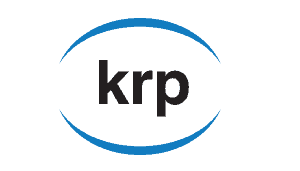April tax news: Residential property risk, bare trust dangers & taxable tips

RESIDENTIAL PROPERTY WARNING — HUGE PENALTIES!!
Are you involved with a residential property that is not owned directly by a human being who is either a Canadian citizen or a permanent resident of Canada?
For example:
- A cottage is held in a Trust, which the family patriarch set up before his death years ago, so that his grandchildren can share the use of the cottage.
- A family member overseas is the registered owner of a condominium in Vancouver.
- A private corporation owns a townhouse that it rents out.
Beware the new Underused Housing Tax (UHT)!
The Underused Housing Tax Act was enacted by the Liberals last year, and is now in force. It is designed to tax residential property–namely homes and condos–that are owned by non-Canadian investors who are not resident in Canada, and that are not rented out, as a way of discouraging such ownership and making more rentals available. The tax is 1% per year of the residential property’s value.
To prevent such owners from avoiding the UHT by placing the home in a corporation, trust or partnership, all such entities owning residential property are caught by the system and must file returns. If there is no non-Canadian ultimate owner, no tax is usually payable — but the filing requirement remains, and there are huge penalties for not filing.
Generally, the only residential property owners not required to file a UHT return are:
- an individual (human) who is a Canadian citizen or permanent resident
- a public corporation listed on a Canadian stock exchange
- a registered charity, co-op housing corporation or Indigenous governing body or corporation.
Others must file even if no tax is owing. And the penalties for non-filing are severe: minimum $5,000 for an individual and $10,000 for a corporation! As well, by not filing the owner may lose the ability to claim an exemption, so that the tax will apply when it should not have applied.
While the 2022 UHT returns and related payments are technically due on Monday, May 1, 2023 (normally April 30, but since that’s a Sunday it’s extended to Monday this year), the Canada Revenue Agency has recently agreed to waive all penalties and interest arising from an otherwise late-filed UHT return, provided that the CRA receives the return no later than October 31, 2023.
The Canada Revenue Agency has a helpful web page at canada.ca/cra-uht, explaining how the UHT operates and its impact on some residential property holdings. Lots more detail is available from other sources online. But you have to be aware of the problem, or you won’t go looking for this information.
If you, or any non-Canadian friends or family members — or any corporation, trust or partnership — may be required to file a UHT return, then check the rules or get professional advice, and find out right away what your obligations are. Even if you won’t need to pay any tax, you might need to avoid the $5,000 or $10,000 penalty.
And finally, note that the penalties can be more than the minimum. The penalty is also 5% of the tax owing, plus 3% per month, with no minimum. If you miss filing for several years, the penalties for multiple unfiled returns will grow exponentially.
BARE TRUST DANGERS
More new dangers abound from new trust reporting rules that were enacted by Parliament last December, and will take effect for the 2023 tax year. The first reporting under these rules will be required by April 1, 2024 (90 days after year-end, but since March 30 in leap year 2024 is a Saturday, the deadline will be extended to Monday).
Trusts have always been required to file a T3 return, but the CRA has allowed a trust not to file in most cases if it has income of $500 or less and no tax to pay. And a “bare trust” was not required to file a return at all.
A “bare trust” is a common-law arrangement where the nominal or legal owner of property has no rights to the property, and must simply follow the instructions of the real owner, such as to hold the property and eventually transfer it to another party. (In Quebec, where the Civil Code applies instead of the common law, a “prête-nom” is similar to a bare trust.)
Thus, for example, real estate is often held by a numbered company as bare trustee for the real owners, who might be individuals, corporations, a limited partnership or some combination of these. Or a lawyer might have title to a home or cottage as bare trustee for a group of family members.
Under the new rules (Income Tax Act subsection 150(1.3)), a bare trustee will have to file a trust return. The CRA has not yet indicated whether this will be the usual T3 return, or a special return that it develops for reporting bare trusts (which seems more likely, since the bare trust itself does not pay tax). These rules are part of a general expansion of CRA reporting requirements, partly to comply with worldwide tax compliance rules that have been developed by the Organisation for Economic Cooperation and Development (OECD).
Non-reporting can trigger a penalty of $25 per day up to 100 days, i.e. $2,500 once the return is 100 days late. Deliberate false reporting can trigger a penalty of 5% of the highest value of the trust throughout the year, minimum $2,500.
HST QUIZ — IS YOUR BUSINESS CHARGING IT PROPERLY?
Whether or not you’re in a Harmonized Sales Tax province, if you carry on business and any of your customers are in another province, you need to know the rules for when to charge HST. You might be surprised!
The GST/HST rates are:
- 13% HST for a supply “made in” Ontario (generally customers located in Ontario)
- 15% HST for a supply “made in” New Brunswick, Nova Scotia, Prince Edward Island and Newfoundland & Labrador (generally customers located in the Atlantic provinces)
- 5% GST for a supply “made in” in any other province or the territories. (Quebec has a GST-like 9,975% Quebec Sales Tax, which is not part of the HST but is charged in Quebec together with the GST. Alberta and the territories have only the 5% GST. Each of B.C., Saskatchewan and Manitoba has a provincial retail sales tax that in most cases does not apply to vendors outside the province.)
Try this quiz and see how you do. Answers appear after all the questions
- You are in Calgary and you sell plastic widgets. A customer in Halifax orders a widget and you ship it to her in Halifax. What rate of tax do you charge?
- You’re in Calgary and you sell widgets. A customer in Halifax orders a widget and you “deliver” it to your warehouse in Calgary. In order to get the widget to her, you also arrange (as your customer’s agent) for a courier company to deliver the widget to her. What rate of tax do you charge?
- You’re in Calgary and you sell widgets. A customer in Halifax orders a widget and you deliver it to your warehouse in Calgary. In order to get the widget, your customer calls a courier company to have the widget picked up at your warehouse. What rate of tax do you charge?
- You’re an engineer based in Charlottetown. A client in Winnipeg thinks he’s invented a new device, and wants you to review his design plans to tell him if they will work. You stay at your office in Charlottetown, review the plans, write a report and bill the client. What rate of tax do you charge?
- You’re an engineer based in Charlottetown. A client in Winnipeg thinks he’s invented a new device, and wants you to review his design plans to tell him if they will work. You travel to Winnipeg, review the plans, write a report and bill the client. What rate of tax do you charge?
- You’re an engineer based in Charlottetown. A client in Winnipeg thinks he’s invented a new device, but is being sued by a competitor in Ontario who says your client stole the plans. They’re in litigation in the Ontario Superior Court of Justice. You stay at your office in Charlottetown, review the plans, write an expert report for your client to use in the litigation and bill the client. What rate of tax do you charge?
- Following #6, you travel to Toronto to testify as an expert witness in the trial, on behalf of your Winnipeg client. What rate of tax do you charge?
- You’re a hair stylist in Edmonton. You style the hair of a client from New Brunswick who is visiting Edmonton. What rate of tax do you charge?
- You’re a plastic surgeon in Edmonton doing facelifts (which are taxable when done solely for cosmetic reasons). You do a facelift for a patient from New Brunswick who is visiting Edmonton. What rate of tax do you charge?
- You’re a computer expert based in New Brunswick. A business customer from a nearby town in Quebec sends you a computer to repair. You repair it and return it. What rate of tax do you charge?
(See below for the answers.)
HST Quiz—The Answers
Here are the answers to the quiz above.
- You charge 15%, the rate for Nova Scotia. Goods sold and shipped anywhere in Canada bear GST or HST based on the rate of tax in the destination province.
- You still charge 15%, the rate for Nova Scotia. As long as you’re arranging the shipping, even as the customer’s agent, the same rule applies as in #1: the GST or HST applies at the rate in the destination province to which you’ve shipped the goods.
- You charge only 5% GST, the rate for Alberta. You’ve completed delivery at your Calgary warehouse, and the customer has made her own arrangements to pick up the goods. (If she’s not making the purchase for business, she may have a legal obligation to self-assess, report and pay the extra 10% to the CRA.)
- You charge only 5% GST. Services are normally taxed based on the customer’s address (subject to some exceptions), and there’s no HST in Manitoba.
- Again you charge only 5% GST. It doesn’t matter where you perform the work. Services are normally taxed based on the customer’s address (subject to some exceptions).
- You charge 13% HST, the rate for Ontario. A service “rendered in connection with litigation” in a province’s courts is taxed at the rate for that province. The litigation is in an Ontario court. This rule is often thought to apply only to lawyers’ services, but is actually much broader!
- Again you charge 13% HST, the rate for Ontario, because this is a service in connection with litigation in an Ontario court. It doesn’t matter where you perform the service.
- You charge only 5% GST, the rate for Alberta. Even though services are normally taxed based on the customer’s address, there is an exception for “personal services” performed in the presence of the individual to whom the services are rendered. Such services are taxed based on where they are performed. Since you perform the service in Alberta, the Alberta rate applies.
- You charge 15% HST, the rate for New Brunswick. The exception for “personal services” in #8 above doesn’t apply to an “advisory, professional or consulting service”. Instead, such a service is subject to the normal rule for services, based on the customer’s address. (A physician’s service is a “professional” service.)
- You charge only 5% GST, the rate for Quebec. There is a special rule for goods that are sent for repair, alteration, cleaning or a similar physical service. The tax applies based on the address to which the goods are returned after being repaired, altered, cleaned, etc. (If you had an office in Quebec or you make over $30,000 of sales to Quebec consumers per year, you might have to charge Quebec Sales Tax as well.)
If you didn’t score too well on the quiz, don’t be surprised. The rules are complex. What’s important is that you ensure that your business applies the rules correctly. Otherwise you could be in for a very costly assessment when a CRA auditor shows up to audit your business for the last several years of GST and HST.
SIMPLIFIED INSTALMENTS IF YOU HAVE THE CASH
If you are required to pay the CRA personal or corporate instalments for income tax or GST/HST purposes, here is a useful tip that can simplify your payments. It is only worth considering if you have ample cash available and no concerns about running short of cash.
Personal Income tax instalments are payable quarterly. Corporate tax instalments are payable monthly, or quarterly for certain small Canadian-controlled private corporations. GST/HST instalments, if you are a registrant that files GST/HST returns annually, are payable quarterly. Instalments are normally based on your previous year’s tax, although if your current year’s tax is lower, you can use that figure instead.
(Personal income tax instalments for March and June are typically based on two years back, so the CRA can send you a statement in February, before you have filed last year’s return, telling you how much you need to pay to ensure that you won’t be charged interest. Your notice for September and December will then tell you how much to pay so that your total instalments for the year equal your last year’s tax.)
If you pay an instalment late, interest is charged for each day that your payment is late. As of the second quarter of 2023, the interest rate is currently 9% per annum, compounded daily. This rate is the base commercial T-Bill rate, rounded up to the next 1%, plus 4 percentage points. It is adjusted quarterly.
Normally, refunds owing to you from the CRA bear relatively low interest after 30 days, currently at 7% for individuals and 5% for corporations (compounded daily in each case).
However, if you pay an instalment early, the CRA will credit you with “offset interest” or “contra interest”, at the same high rate of interest that applies to your late payments. This “offset interest” is offset only against late instalments; it is never paid out to you.
This offset interest is not simply CRA administrative policy. It is legally required by subsection 161(2.2) of the Income Tax Act and, for GST/HST, subsection 280(3) of the Excise Tax Act.
What this means is that, if your total “late payment” interest owing on late instalments matches your total “early payment” offset interest, the two will cancel each other out.
As a result, if you make a single payment at the midpoint of all your instalment obligations for the year, then provided the interest rate does not go down after mid-year, you will not be assessed any interest.
WATCH OUT FOR SHORT TAXATION YEARS
A corporation can be deemed to have a year-end for income tax purposes, in the middle of its fiscal year, for a number of reasons.
One common reason is an acquisition of control of the corporation (now called a “loss restriction event” in the Income Tax Act). If the corporation is sold to new, arm’s-length owners, it will be deemed to have a year-end and start a new taxation year. (Non-capital losses from previous years will then generally not be claimable unless the corporation continues to carry on the same or a similar business.)
Another trigger for a year-end is if the corporation becomes or ceases to be a Canadian-controlled private corporation. Thus, for example, if the majority shareholder becomes non-resident, the corporation will be deemed to start a new taxation year.
There are several other such triggers, including becoming or ceasing to be exempt from tax, and becoming or ceasing to be a “financial institution”.
What happens when the corporation has a new taxation year and a resulting “short” year (or two)? Many things change, and there can be numerous negative side effects.
For example:
- A corporate tax return must be filed for the “short” year, within 6 months of the deemed year-end. There may be penalties for not filing.
- The due date for the current year’s tax balance is moved earlier (two or three months after the deemed year-end).
- A loss carry forward year will usually vanish due to the extra taxation year, as can other carryforward years such as for foreign tax credits, investment tax credits and certain reserves. This means that the carryforwards will expire sooner than they otherwise would. (Most business losses can now be carried forward for 20 years, but some other carryforwards are much shorter.)
- A loan to a shareholder may have to be repaid sooner to avoid being included in the shareholder’s income.
- Certain reserves, and certain accrued amounts that were deducted but have not been paid out, may be reincluded in income sooner than would otherwise be required.
As well, certain calculations that are based on the presumption that a taxation year has 365 days will now be different. For example, a corporation’s monthly instalment requirements are based on the previous year’s tax payable, but prorated based on the length of that taxation year. Suppose a corporation has $100,000 of tax payable for the year but all of it was earned in the first three months of the year, and the corporation was sold after 3 months. The “instalment base” for the next year will be $100,000 but prorated to a 12-month year, so the corporation might have to remit instalments of $400,000 the next year (though it can pay lower instalments if it knows that its tax will be lower).
Similarly, most capital cost allowance claims will be prorated to the short taxation year, as will various other claims including those for the small business deduction, and limitations on investment tax credits for small corporations.

AROUND THE COURTS
Restaurant gratuities (tips) are taxable for income tax, CPP, and EI, and may be subject to GST/HST
Recent Court cases have confirmed that not only are tips to waiters taxable, but also that if they are paid through the employer, they are subject to normal source deductions: income tax, CPP, and EI. If they are mandatory gratuities, the employer must charge GST/HST on them.
In Ristorante A Mano Ltd., 2022 FCA 151, a restaurant collected tips that were paid by credit card and distributed them to the waiters (after taking off a processing fee to recover credit-card charges, and a further amount for the kitchen staff). The CRA took the view that these payments were part of the waiters’ income, not only for income tax purposes, but also for calculating the Employment Insurance premiums the restaurant had to pay, and the Canada Pension Plan contributions it was required to make for its employees. The CRA assessed the restaurant accordingly, and the restaurant appealed.
Both the Tax Court of Canada and, on appeal, the Federal Court of Appeal ruled in the CRA’s favour.
In another recent case, 1410109 Ontario Ltd., 2022 TCC 141, a company operated a banquet hall in Ontario. In its contracts and invoices for weddings and other events, the company charged an automatic 15% “gratuities” on its fees, and paid this money out to the manager, chef and serving staff. The CRA assessed the company for not charging HST on the gratuities, and the company appealed.
The Tax Court of Canada again ruled in the CRA’s favour. The 15% was not a gift from the patrons to the servers, as the company claimed. Rather, it was required by the contract, and thus formed part of the “consideration” to which 13% HST applied. Thus, the company was liable for not collecting and remitting HST on all the “gratuities”.
***
This letter summarizes recent tax developments and tax planning opportunities; however, we recommend that you consult with an expert before embarking on any of the suggestions contained in this letter, which are appropriate to your own specific requirements. For assistance with your tax planning and accounting needs, contact a member of our team.


